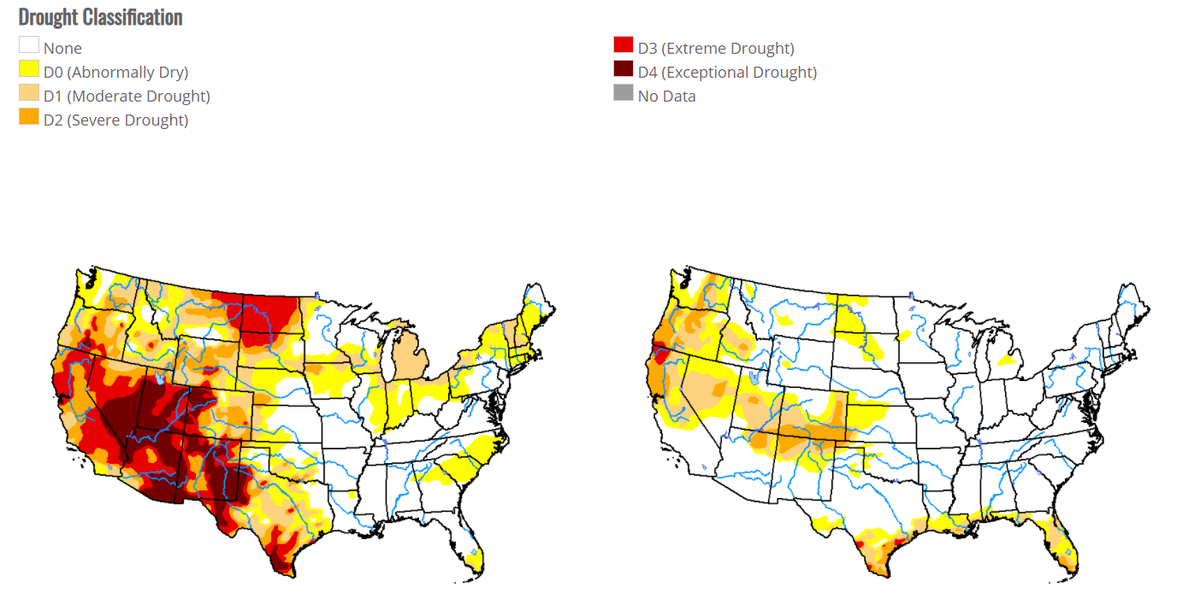Drought conditions continue to worsen across the Borderland
El Paso, Texas -- Drought conditions across the Borderland have gone from bad to worse, according to the latest U.S. Drought Monitor report. Almost 80% of New Mexico is in an extreme drought and every area across El Paso County is facing some form of a drought.

Source: U.S. Drought Monitor
One year ago, there was no area officially under a drought. The pictures posted are drastically different.
However, Jason Laney with the National Weather Service says that even though this time last year we weren't "officially in a drought," we were headed there.
"Drought affects us all and in many different ways. It's not just the farmers and lower crop fields. It's not just the cause of irrigation and the cost of bringing water into our homes. It all combines to have an effect locally, regionally, and even nationally," said Laney.
There are hopes this upcoming monsoon season will replenish the desert soil with water... but the keyword here is "hope."
For background, we experience a monsoon every summer.
A monsoon is a seasonal reversal of the winds. We spend most of our year with winds from the west. They're nice and dry and we're a desert, we don't get much rain. However, in those precious summer months when the winds turn and come from the south and southeast. It transports in moisture and that's the key ingredient for getting the rain.
To be considered a monsoon, an area must receive about 50% of its annual rainfall in that specific time frame. Which we tend to average about 4-6 inches of rain during our monsoon season. Our annual rainfall comes around 8-10 inches.
We ended last year's rainfall total with only 5.84 inches of rain. Creating a huge deficit in water resources.
So will there be hope for this year's monsoon to quench the thirst for water?
According to Laney, climate models are predicting that we may have a weak monsoon this year.
So what can we do to help?
Here are some tips for in and around the house:
- Turn off irrigation systems
- Don’t wash sidewalks.
- Water the garden only by hand if necessary, no more than three days per week before 9 a.m. or after 7 p.m. to reduce evaporation.
- Landscape with drought resistant plants.
- Go to a car wash that uses recycled water.
- Turn off the water when you brush your teeth.
- Among other things, take shorter showers.
